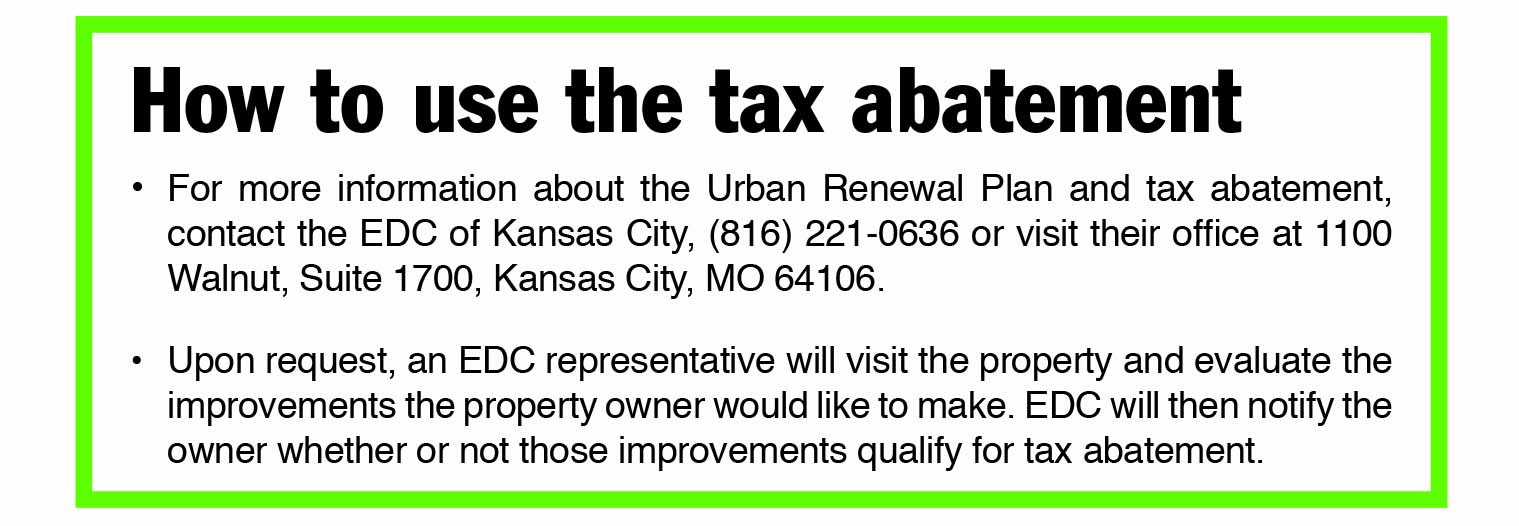By LESLIE COLLINS
Northeast News
December 25, 2013
Lykins and Indian Mound neighborhoods have now gained additional tools for attracting residents and spurring investment in the neighborhoods.
Kansas City City Council members recently approved the Indian Mound/Lykins Urban Renewal Plan which declared a majority of the two neighborhoods as blighted.
“Close to 85 percent of the properties in the area exhibited at least one blight characteristic; many more exhibit more than that,” said Bob Long of the Economic Development Corporation (EDC) of Kansas City.
The plan encompasses about 6,000 parcels, he said. According to the city’s fact sheet, the goal of the Urban Renewal Plan is to “stimulate rehabilitation, renovation, reinvestment, and development of commercial and residential properties within the area.”
To spur development and reinvestment in the two neighborhoods, the plan includes Chapter 99 tax abatement for both commercial and residential properties in Lykins and Indian Mound. Upon meeting certain requirements and completing improvements, a property owner would receive a freeze on the assessed valuation for 10 years.
“Basically we wanted to create the plan so that most of Northeast would now fall under an urban renewal area and therefore be eligible for tax abatement,” City Council member Scott Wagner told Northeast News. “The problem in generating these sorts of areas is that there is a pretty steep cost upfront in order to do the blight study and the fees that are involved in creating those areas.”
However, for the Indian Mound/Lykins neighborhood blight study, Wagner helped secure city dollars to complete the study. The study was funded through one-time surplus revenue from a prior redevelopment effort in the Northeast known as the Century Towers Redevelopment Project.
Independence Plaza, Scarritt Renaissance and Pendleton Heights have had an urban renewal plan in place for years, Wagner said. In the case of Independence Plaza, the plan dates back to the 1960s, he said.
“To be able to get Indian Mound and Lykins completely in an urban renewal area allows us a real opportunity to further sell the area and further incentivize people living in the area to reinvest in their homes and be rewarded in doing so,” Wagner said. “It’s really an incentive that is designed to not punish people who make improvements to their home (or commercial property). If the value of your home (or commercial property) rises because you made the improvement, it doesn’t mean you have to pay the extra taxes.”
Both neighborhoods voiced support of the plan which becomes effective just before the New Year, Wagner said.
Both neighborhoods also voiced concern regarding imminent domain, and to appease those concerns, the city inserted language into the plan stating that in order to implement imminent domain, the project would need neighborhood association and city council approval.
“I think overall, it’s a good thing,” Indian Mound Neighborhood Association Secretary Bryan Stalder said. “We’re open to any help the city can offer.”
Indian Mound residents have accepted “the fact that Indian Mound has a lot of problems,” Stalder said. “Probably at least one house on every block could be considered blight.”
To combat that blight, Indian Mound uses volunteer code inspectors to turn in major code violations to the city. Having the Urban Renewal Plan adds another tool for the neighborhood, Stalder said.
“We want to make this place as attractive as possible,” Stalder said, “and having these tools in place is a positive way to approach what’s considered blight.”

















